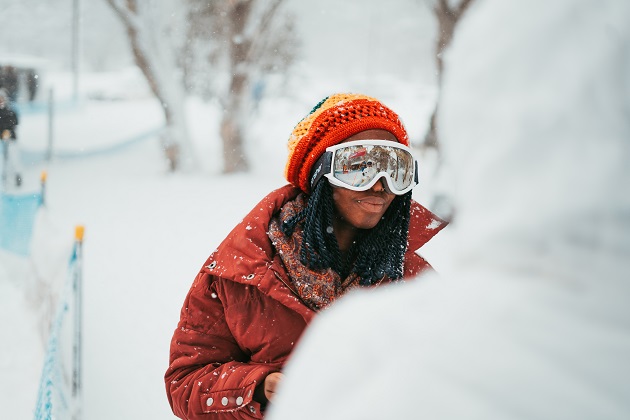If you are a ski enthusiast, by now you have probably spent hours browsing the best online shops for ski equipment, researched and wisely chosen a new board for the next season or a pair of shiny sticks. And while all that is great, have you given any real thought to what you’ll be wearing? Exactly. In today’s blog post, we will talk about the ski jacket and its huge importance for having a pleasant and comfortable skiing experience.
A good ski jacket needs to keep you warm, be practical, be made of hard-wearing materials and make you feel good while wearing it. Today, there is a huge range of ski jackets on the market. They come in different styles, brands, colours, and patterns, which means everyone can easily find exactly what they need. Here are the ultimate features to look for when shopping for ski jackets.

Shell Vs. Insulated
Shell ski jackets are lightweight and less bulky but they don’t provide much insulation, so on particularly cold days, you will need to layer up underneath. Insulated ski jackets, on the other hand, are heavier and bulkier and they will certainly keep you warmer. Yes, you can always wear fewer layers underneath, but on warmer days that insulated outer layer may still be too warm, so decide upfront how much insulation you actually need.
Breathability
It is important for the outer layer of the jacket to be breathable, even more so when working up a sweat touring or freeriding. Look for the jacket’s ‘Moisture Vapour Permeability’ rating, which should be around 20,000/m2/24hrs.
Waterproofing
The higher the jacket’s ‘hydrostatic head’, the more resistant it will be to precipitation. This information can be found on the jacket’s swing tag and will be written as ‘mm H2O’ – 20,000 H2O is a good number to look for.
Seams
This is usually where moisture gets into the jacket. Laser cut, taped and glue seams are best. Unlike stitching, these seams don’t involve putting holes into the fabric, preventing moisture to find its way to your body.
Features
A well-fitted helmet-compatible hood is a useful feature, while water-resistant zips are vital. Furthermore, ventilation zips are a great feature in warmer weather or for more high-energy skiing as they help regulate the body’s temperature. Outer layers that have large pockets with mesh inners can double as ‘vents’. Last but not least, consider how many pockets you want and whether those on the jacket would be accessible if you plan to wear a pack.
Type of Skiing
If you are the kind of skier who likes cruising at a slower pace and you ski for mere relaxation, then an insulated ski jacket is your best bet. But if you are ski touring, freeriding, or just going hard on the pistes, then a shell jacket may be a better option as it will cope efficiently with the demands of high energy skiing – especially in warmer temperatures.


